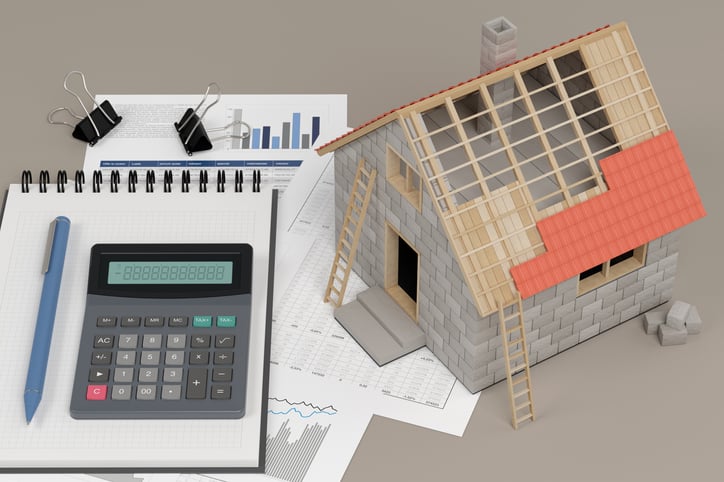
Editorial Note: This article was brought to you courtesy of Rose Morrison, managing editor of Renovated.com.
A construction budget is essential for any successful project. As the construction manager, you must create an accurate plan to keep the build on time and within cost. The budget you design is the roadmap for all buying decisions. It also ensures the project owner and stakeholders have a clear vision for the direction of the build and can have sufficient funding for each stage of construction.
With these high stakes, getting the budget as close to accurate as possible from the beginning is critical. Unexpected events and costs will arise, but with your guidance, the project can still end in the black or green.
This guide will help you create a budget for your construction project, walking you through the categories you must consider. You’ll also discover some common oversights and added costs construction managers frequently miss. Stick around to the end for software recommendations to make budgeting easier.
Forming a Construction Budget
Stay on track with your construction project budget using these six straightforward steps.
Step One: Create a Template
The first thing you should do is create a template for this budget and future projects. Make a spreadsheet or use project management software to detail every possible expense category and line item. Be as thorough as possible and maintain a solid organizational system.
A good template will take a while to complete from scratch, or you can edit a premade digital download or use one from your management software. All this upfront work will pay off on future projects when you can skip this step and move straight to step two.
Step Two: Clarify the Scope of the Project
Your next step is to meet with all stakeholders and the project owner to clarify the scope. Before you can allocate funds, you must know the owner’s available funds and intentions for the project. You’ll also need design details like construction plans and desired finishes. Once you have a general understanding, you can begin the next phase.
Step Three: Research and Analyze
You now have most of the information you’ll need to create a draft of the construction budget. You’ll finish the process by researching similar past projects. Where did expenses exceed their limits? Were timelines a factor? What materials took longer to get or were more expensive than expected? Which vendors and contractors followed through, and which didn’t?

Use these important questions as you look through old builds. They’ll influence your current budgeting considerations and help you make wise decisions about future purchases and work partners.
Step Four: Solidify an Itemized Draft
The time has come to write up your itemized budget draft. You’ll have to go mostly on estimates at this point, but with input from stakeholders and research on past projects, you should be able to get close to accurate.
Your template will come in handy during this step. Simply run through each line and enter the appropriate amounts for categories you’ll need for the current project. Once you finish, you can work toward finalizing estimates and approving the budget.
Step Five: Get Necessary Approvals and Make Adjustments
Now you can present all stakeholders and the project owner with your draft. Allow everyone to share their input. Skipping this step will make getting approvals difficult and lead to missed mistakes — more eyes equal a more accurate budget.

It’s imperative to solidify any client requests or alterations to the original design at this stage. Also, check in with the general contractor and any subcontractors to get more accurate estimates based on the project's current scope.
Once you gather all the feedback, make the necessary changes and finalize your budget. Send it to all interested parties to keep everyone on the same page and get approvals to move forward.
Step Six: Maintain the Budget and Communicate
A construction project budget isn’t a set-it-and-forget-it tool — you need to check in with spending throughout the build process. Use the budget to influence buying decisions as you move along. Keeping accurate records and sticking to the plan as closely as possible in the tumultuous construction industry will increase your likelihood of a successful, profitable project.
Inflation can cause the actual numbers for materials and labor to deviate significantly from your initial proposed budget. Having an open line of communication with the stakeholders and client will build trust, and possibly bring further business or solidify working relationships.
Best and Worst Budget Cut Ideas
It’s all too easy to forget critical categories in your budget. Use this list to make the best decisions for your team and avoid potential mistakes.
Best Budget Cuts
Renting Equipment and Tools
Buying the nicest machines on the market is tempting when planning a new project. Even if it would last a long time, renting multipurpose site equipment is much better for your budget.

Consider the compact dozer loader. Purchasing and maintaining one could be something you do for your team down the road. If you don’t have room in the budget right now, you’ll save more money by renting one. It’ll still complete the loading and dozing tasks necessary for the project, but you’ll have more money left over for other necessities.
Depending on the project's timeline, you may need heavy machinery above and beyond what your contractor has available. Renting the needed machinery will save precious time, especially if you must complete the work last minute. Conserving money and time are two valuable benefits for construction teams — they make the job more manageable and impress clients who are counting down the days until site completion.
Editorial Note: Inventory managers can take advantage of Job Costing for equipment rentals to cut down on inventory-related construction overhead and be more profitable.
Seeking Materials With a Wider Scope
Materials are the most visible aspect of your construction project budget. The project scope will determine the amount you need for each line item. However, your client’s preferred finishes will influence the price of getting the essentials.
The best way to budget for your construction project properly and save money is to seek materials early in the process. Compare supplier estimates and seek materials closest to the site to minimize transportation costs. Consider companies you haven’t worked with before if their materials are of the same quality but more economical. Giving yourself more time to find the best prices without compromising on quality will help you cut your budget and deliver excellent work.
Assign Utility Management Responsibilities
Every project will need temporary utilities to perform the job and provide necessities for people on site. You’ll need to factor those into your budget along with the installation of permanent utilities for the building, including hookup fees and permits.
Assigning rotating management responsibilities for active site utilities is an excellent way to shrink your final budget. If one person knows they’re in charge of shutting down all lights and excess utilities when the workday ends, lights won’t stay on for weeks in potential confusion. Utility bills will be much lower throughout the project.
Continually Save for Contingencies
A contingency fund is one of the most critical items in your construction budget. This money provides a safety net to cover unexpected expenses like acts of God and change orders. You should commit at least 5–10% of your budget to emergency savings for the project.
It wouldn’t be wise to skip saving this money. No one can predict the future, but you can save for it. Set money aside in your budget for your emergency fund. If you never use it, build on it with the next project. A rolling savings account means greater protection for future projects and you can potentially save a little less later because you already have hefty savings waiting for emergencies.
Improve Your Team’s Efficiency
Miscommunication costs teams in every professional industry. Someone might order materials that are already on the way or forget to apply for permits because another team member thought someone else handled it. Virtual tools like all-access spreadsheets, messaging platforms and shared calendars are the best ways to prevent these extra costs from hurting your next project.
Worst Budget Cuts
Some things aren’t worth sacrificing, even when you need extra room in your budget. These are some of the biggest mistakes managers make when saving money on a project.
Avoiding Property Fees
Your property fees encompass the land's purchase price, all associated legal fees and taxes. The location and acreage will influence this line item significantly. Management teams have little to no control over the final total. Avoiding paying the entire cost could result in legal ramifications.
Seeking Discount Professional Services
Professional fees and services will pop up throughout the project, so you must ensure you’ve allocated enough funds to cover them. You’ll need room in the budget for surveying, permitting, testing, designing, engineering, legal, accounting and waste disposal, among others. Opting for discounted services may result in faulty work due to unlicensed contracting teams.
Not Prioritizing Contractors’ Well-Being and Labor
A project won’t get off the ground without the right team. This is a challenging category to estimate correctly when you first start as a project manager. As you get more experience, you’ll know the best contractors for the money and how many machine operators or workers you’ll need for each project phase. Make room in the budget for workman’s compensation, sick days, vacation and other labor-related expenses.
Not Communicating About Insurance and Taxes
All construction projects are legally required to have liability insurance, but the amount of coverage will depend on the magnitude of the build. Your legal and financial experts can give you fair estimates for the money you should allocate to insurance and taxes. Skipping this step might result in spending money that isn’t necessary.
Shrinking Project Management Teams
Project management expenses cover a wide variety of line items. The budget must account for manager's and other office staff's salaries. You may also need to pay for security personnel and gear. Office supplies, rented space and other necessities to keep the job running smoothly will fit in this category.
Although delegating the project management work to one or two people may cut your budget, it will likely pile too much responsibility on their shoulders. It’s better to pay a team to handle large projects. If smaller site work happens later, you can pick the best project manager to coordinate everything by themselves. Otherwise, they could experience burnout and miss crucial details that cost the team in the long run.
Helpful Digital Tools
Software programs can drastically improve your budgeting process. They often have templates for you rather than creating one from scratch. They also make it easier to track changes to the budget in real-time and share it with stakeholders. Any of these options will help you take control of your budget.
Archdesk
Archdesk is a one-stop solution for all your project management needs, going above and beyond budgeting software. They individualize pricing based on the services you want and how many people will use it. A cloud-based system keeps everyone on the same page and able to access essential data from anywhere. Build estimates, create a budget and monitor the project in real time.
Procore
Procore has extensive offerings, helping your entire team stay in contact and improving access to critical information. Create and manage your budget throughout the life of your projects with this software. You can work with their team to get a custom price on the solutions for your needs.
Buildertrend
Builldertrend’s fantastic offerings come in packages starting as low as $339/month. With their software, you can create budgets and track bids, invoices, change orders, and many other valuable files. Get real-time reporting from the job site and track your numbers to stay within budget.
Work Smarter, Not Harder
Using paper and pencil or spreadsheets will only get you so far. With these methods, you’re more likely to make an error and end up over budget. You’ll also have a more challenging time keeping everyone on the same page since there’s no easy way to share and edit your budget in real time with stakeholders and the project owner.
Digital tools are the future of construction management. They help you create a reasonable budget, track it through the project and share it with essential team members. Using one of the recommended software programs can transform the success of your project, keeping you on time and within budget.
This is a guest post written by Rose Morrison, managing editor of Renovated.com.